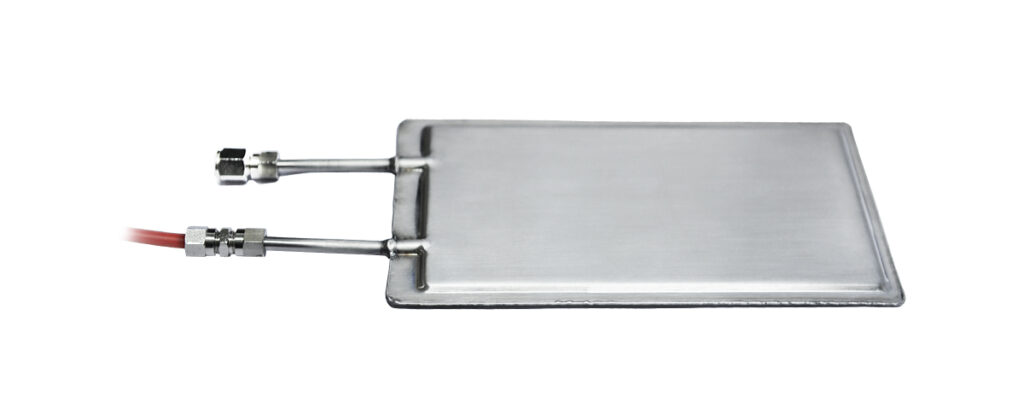Measure principle
The two plates are soldered together at the rim and filled with oil. They transmit the force they perceive from the ground or structure, via a stainless steel tube connected to the pressure cell, The cell consists of two rectangular stainless steel plates, soldered at the edge to form an iron interspace,which is filled with a special oil and connected by stainless steel tube to an electric pressure transducer, which measures the pressure on the cell itself, providing an output signal 4-20 mA or digital sensor signal (piezoresistive sensor or vibrating wire sensor), proportional to it.
The cell is filled under vacuum with deaerated oil in order to avoid effects caused by air compression. To ensure good adhesion of the cell plates to the contrast walls, a pressurization group with compensation valve can be provided; this allows the introduction of more oil into the cell through an appropriate manual pump, increasing its volume and therefore the space occupied (thickness). The valve is applied via a second tube connected to the cell, with an appendix in a 1.5m long Rislan tube.
Pressurization is particularly necessary for concrete applications, where the shrinkage of concrete can cause separation from the cell.
Technical Specifications
| Sensor |
|
| Material of the cell |
Stainless Steel AISI 316 |
| Dimensions |
Width 110 mm, lenght 220 mm (available with dimensions of 200mmx200mm ) |
| Type of sensor |
Piezoresistive or vibrating wire |
| Body of the sensor |
Stainless steel AISI 303 |
| Range |
From 10 to 60 bar |
| Supply Voltage |
8-33 Vdc for analogue sensors; from vibrating wire datalogger. |
| Output |
Analogue: 4-20 mA 2 wires
C.V.: frequency or period |
| Total Accuracy |
Analogue +/- 0.5% F.S.
C.V.: 0,2% f.s. |
Technical Assistance
If you have any requests or questions about our instruments or if you have special needs that require different solutions from the standard, please contact us. Our team will provide all the necessary information and will be very happy to work with you to study, develop and customize instruments and solutions suitable for your specific needs.
All information in our datasheet is subject to change without prior notice.
Please check the datasheet/details carefully and contact Pizzi Instruments for further information

